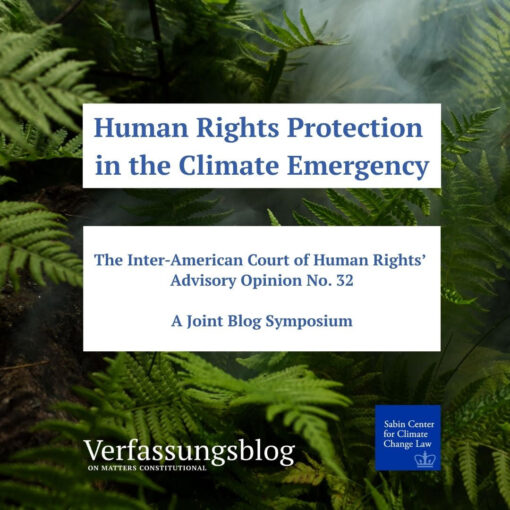 “Climate change has to be broken down into bite-size pieces,” Hillary Clinton said at the Clinton Global Initiative (CGI) Action Network meeting on post-disaster recovery last week. CGI convened over 500 government and private sector representatives to commit to projects that will make the Caribbean carbon neutral this century. I attended on behalf of the Sabin Center, to give closing remarks on the importance of regional integration in the face of climate change.
“Climate change has to be broken down into bite-size pieces,” Hillary Clinton said at the Clinton Global Initiative (CGI) Action Network meeting on post-disaster recovery last week. CGI convened over 500 government and private sector representatives to commit to projects that will make the Caribbean carbon neutral this century. I attended on behalf of the Sabin Center, to give closing remarks on the importance of regional integration in the face of climate change.
Tackling climate change in the Caribbean is not just about building environmental resilience, but also economic resilience. As a region of small island states susceptible to global shocks, frequent disaster, and high rates of youth unemployment, economic advancement at the structural and individual level offers the best chance for survival amidst the adaptation funding gap. Five Category 5 hurricanes have hit the region in just 4 years, with devastating effects. Hurricane Maria destroyed the equivalent of 226% of Dominica’s GDP, for example.
The CGI meeting highlighted climate leaders who wed the environmental, the economic, and the equitable. For example, Solar Libre, a CGI Action Network member committed to addressing the gender gap in the solar work force, solarized the facilities of Centro MAM, a reproductive health non-profit, with the support of the Hispanic Federation, a Puerto Rican philanthropic group. The US Department of Labor reports that the two fastest jobs in the next decade will be solar photovoltaic (PV) installer and wind power technician, but women are set to be left behind. Solar Libre works to tear down the gender barrier in the clean energy tech space by training Puerto Rican women as solar PV installers.
In my closing remarks on the “Empowering Dominica’s Future Generations” panel, I affirmed two aspects of regional integration necessary to launch the Caribbean into a sustainable future. First, the Caribbean is a leader in terms of the benefits its regional organizations provide to people displaced by disaster. Two regional economic integration schemes, the Caribbean Community (CARICOM) and the Organization of Eastern Caribbean States (OECS), provide the right to enter and access labor markets in other islands both pre- and post-disaster. No other region in the world is using economic integration to benefit environmental migrants, and the Caribbean model can serve as an example (see more here).
Second, Caribbean people living outside the region are keen to invest. The Caribbean enjoys a large, well-resourced diaspora, and there’s an opportunity to match Caribbean angel investors with Caribbean small business owners in need, especially post-disaster. But regulatory barriers to extra-regional investment undermine this potential. Thus, regional integration means not only strengthening ties between islands, but also between home countries and their diaspora, including by reducing legal barriers to foreign investment.
The CGI convening ended with a call from former President Bill Clinton for Caribbean islanders to claim their future. While climate change presents an existential challenge to the region, a series of recent disasters have revealed both vulnerabilities and opportunities. Investing in climate resilience, and reducing the legal barriers to investment, offers an opportunity to foster economic well-being. A young Jamaican woman who created an app that measures individual carbon footprints, put it this way: “This is not about improving an industry, but transforming lives.”



